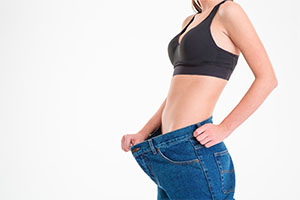
Do you know what your body fat percentage is? Everyone needs a certain amount of body fat, but too much (or too little) can be detrimental to your health. Because of this, it’s important to know your body fat percentage. Here are some things to consider:
Fat is necessary to our bodies for several reasons. It regulates our body temperature, cushions and insulates vital organs, protects connective tissue and stores useful energy. Maintaining a certain percentage of body fat is the key to good health and the amount varies by gender.
Researchers suggest that women keep their body fat percentage between 10-12% of their body weight. So, if a woman weighs 120 pounds, she needs to have at least 12-14 pounds of fat in her body; the remaining pounds (bones, muscles, organs, blood, etc.) will make up the rest.
For men, the percentage should be between 2-4%. A 160-pound man should carry at least 3-6 pounds of fat.
When the percentage of body fat goes beyond these figures and gets closer to one-third of the total body weight in women and one-quarter in men, individuals are considered to be obese and run the risk of having serious health problems. These problems could include diabetes, heart disease, high blood pressure, osteoarthritis and more.
So how can you measure your body mass index to ensure your physical health? Here are 5 ways to do it:
- Body Mass Index (BMI) Calculation
- Waist Circumference Calculations
- Skin Fold Measurements
- Bioelectrical Impedance Analysis
- Near-Infrared Interactance
The most common ways to measure your body fat index are BMI Calculations and Skin Fold Measurements. The most accurate is the Bioelectrical Impedance Analysis. Here’s how each measurement works:
Body Mass Index (BMI) Calculation – Take your weight in pounds and divided it by your height in inches squared. Then, multiply the result by 703. Experts classify a person who has a BMI of less than 18.5 as underweight, 18.5-24.9 as normal, 25-29.9 as overweight, over 30 as obese and over 40 as extremely obese.
Waist Circumference Calculations – Measurements are taken of the hips in women and the neck in men. The measurements are compared to a height-weight chart with age factored in.
Skin Fold Measurements – With the use of calipers, measure a pinch of skin at several points on the body to determine the thickness of subcutaneous fat layers. The measurements are then converted into an estimated body fat percentage.
Bioelectrical Impedance Analysis – This method uses two conductors that are attached to the body. A small electrical current is sent through the body and the resistance between the conductors is measured and converted into a body fat percentage.
Near-Infrared Interactance – Using this technology, a beam of infrared light is transmitted via a fiber optic probe through the skin of the biceps. The light is reflected from the underlying muscle but absorbed by the fat, so the amount reflected gives and indication of muscle-to-fat ratio.
As you can see, there are many ways to help you find your body fat percentage so that you can determine if it lies within a healthy range. Knowing this will help you monitor your diet, exercise and lifestyle so that you can make the most of life!

